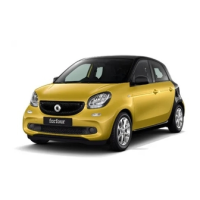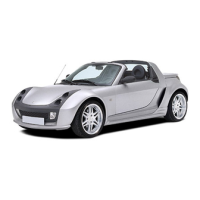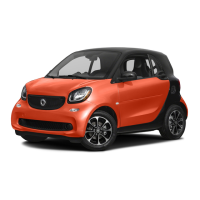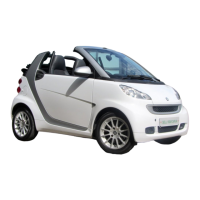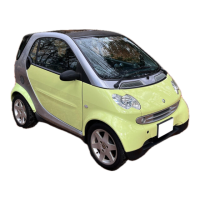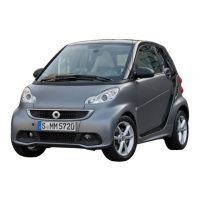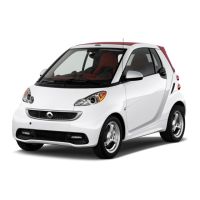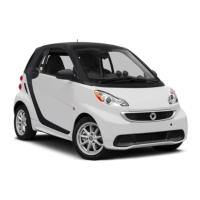R
The seat belt must:
-
not be twisted and must be tight and fit
snugly across your body
-
be routed
across the centre of the shoul-
der and as low down across your hips as
possible
R
The shoulder section of the seat belt should
not touch your neck nor be routed under your
arm or behind your back.
R
Avoid wearing bulky clothing, e.g. a winter
coat.
R
Press the lap belt down into your hip joints
and pull tight by the shoulder section of the
belt. The lap belt must never be routed
across your stomach or abdomen.
R
Never route the seat belt across sharp,
pointed, abrasive or fragile objects.
R
Only one person per seat belt. Infants and
children must never travel sitting on the
lap of a vehicle occupant.
R
Never secure objects with a seat belt if the
seat belt is also being used by one of the
vehicle's occupants. Always observe the
notes on "Loading the vehicle" for securing
objects, luggage or loads (Y page 120).
If children are travelling in the vehicle, be
sure to observe the instructions and safety
notes on "Children in the vehicle"
(Y page 34).
Limited protection from seat belts
G
WARNING
The seat belt does not offer the intended
level of protection if you have not moved
the
backrest
to an almost vertical position.
When braking or in the event of an accident,
you could slide underneath the seat belt and
sustain abdomen or neck injuries, for
example. This poses an increased risk of
injury or even fatal injury.
Adjust the seat properly before beginning
your journey. Always ensure that the back-
rest is in an almost vertical position and
that the shoulder section of your seatbelt is
routed across the centre of your shoulder.
G
WARNING
Persons under 1.50 m tall cannot wear the
seat belts correctly without an additional
suitable restraint system. If the seat belt
is worn incorrectly, it cannot perform its
intended protective function. Further-
more, an incorrectly worn seat belt can
cause
additional
injuries, e.g. in the event
of an accident, heavy braking or sudden
changes of direction. There is an increased
risk of injury, possibly even fatal.
Always secure persons less than 1.50 m tall
in additional suitable restraint systems.
G
WARNING
Seat belts cannot protect as intended, if:
R
they are damaged, have been modified,
are extremely dirty, bleached or dyed
R
the seat belt buckle is damaged or
extremely dirty
R
modifications
have
been made to the belt
tensioners, belt anchorages or inertia
reels
Seat belts may sustain non-visible damage
in an accident, e.g. due to glass splinters.
Modified or damaged seat belts can tear or
fail, for example in the event of an acci-
dent. Modified seat belt tensioners may be
deployed unintentionally or not function as
intended. There is an increased risk of
injury, possibly even fatal.
Never modify seat belts, seat belt tension-
ers, seat belt anchorages and inertia reels.
Ensure that seat belts are not damaged or
worn and are clean. After an accident, have
the seat belts checked immediately at a
qualified specialist workshop.
smart recommends that you only use seat belts
which have been approved specifically for
your vehicle by smart.
G
WARNING
Pyrotechnical belt tensioners which have
been triggered are no longer operational
and therefore cannot protect as intended.
30
Occupant safety
>> Safety.
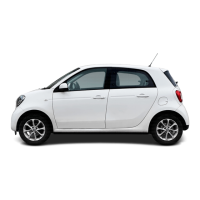
